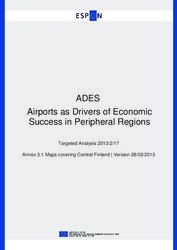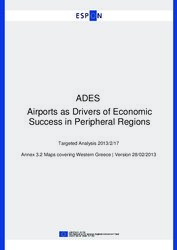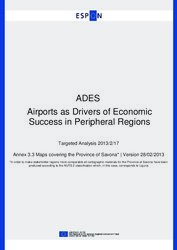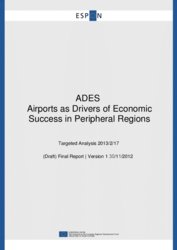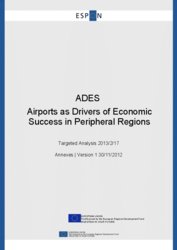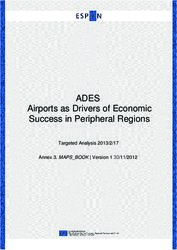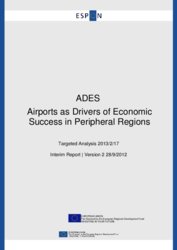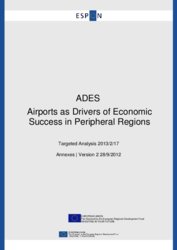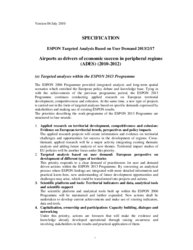ADES - Airports as Drivers of Economic Success in Peripheral Regions
Thematic scope
Transport and accessibility are key factors in terms of economic prosperity and long-term attractiveness. Especially due to globalisation, the importance of accessibility has been highlighted and for some regions the role of airports has become increasingly important.
Peripheral territories often suffer from weak accessibility which potentially may lead to unequal growth and hinder a polycentric development in Europe.
In order to ensure a balanced development, it is therefore important to guarantee a certain level of accessibility to more remote areas.
The project aims at providing a better understanding of the opportunities and perspectives of regional airport investments in peripheral areas from a European and National perspective, as well as its contribution to regional economic development.
The main aim is to provide inputs to policymakers on future options for infrastructure investment in peripheral regions in Europe.
A place based approach is fundamental to effective implementation of the Strategy. Please read more about the main main areas of analysis and main results envisaged on the next page.
Stakeholders
Province of Savona, Italy (Lead Stakeholder)
Region of Western Greece, Greece
City of Jyvaskyla, Finland
Lead Partner
Department of Sciences for Architecture – University of Genoa, Italy
Detailed information on the contracted project team can be found under Transnational Project Groups.
Budget: € 300.000
Project’s lifetime: February 2011 – February 2013
Delivery of Reports
Interim Report: 27 June 2012
Draft Final Report: 30 November 2012
Final Report: 28 February 2013
Publishing
Reports will be published once they are approved by the ESPON Monitoring Committee
More information
Please contact the Project Expert at the ESPON Coordination Unit:
Nuno MADEIRA, e-mail: nuno.madeira@espon.eu
Main areas of analysis
- Territorial potentials analysis in the case study regions: context and position in the national and European contexts
- Measurement and analysis of the accessibility of peripheral regions in Europe in relation to the national and European contexts.
- Analysis of the role of the regional airports in the case study regions. The relation with other transport modes and integration in policy instruments.
- Analysis of factual regional territorial transformations over time in terms of accessibility and economic performance with particular focus on the role of regional airports in peripheral regions in Europe
- Opportunities for regional development and sharing experiences
- Performance of the case study regions and in comparison to other peripheral regions of similar characteristics in Europe.
- Factors that can explain different performances in terms of competitiveness and exchange of experiences. Identification of leading practices and determinants for success
- Relevance of the regional airports for increasing the accessibility of peripheral areas in Europe and enhancing its competitiveness
- Development options to promote a polycentric development and increase the economic performance and competitiveness of the case study regions
- Analytical support for strategy building
- Development of a methodology for measuring the effects of improving accessibility on regional economic performance and vice-versa.
- Options for territorial policy measures based on the results of the analysis and comparison among different regions.
Main results envisaged
- A methodological frame for the analysis of territorial potentials of peripheral regions in Europe based on accessibility issues and economic specialisation.
- Methodology for measuring the effects of improving accessibility (in particular with regional airports) on regional economic performance and vice-versa
- Leading practices and sample of regional development models for peripheral regions in Europe including considerations on the role of regional airports.
- Indicators offering additional information on the measurement of accessibility in peripheral regions, particular linked to air access.
